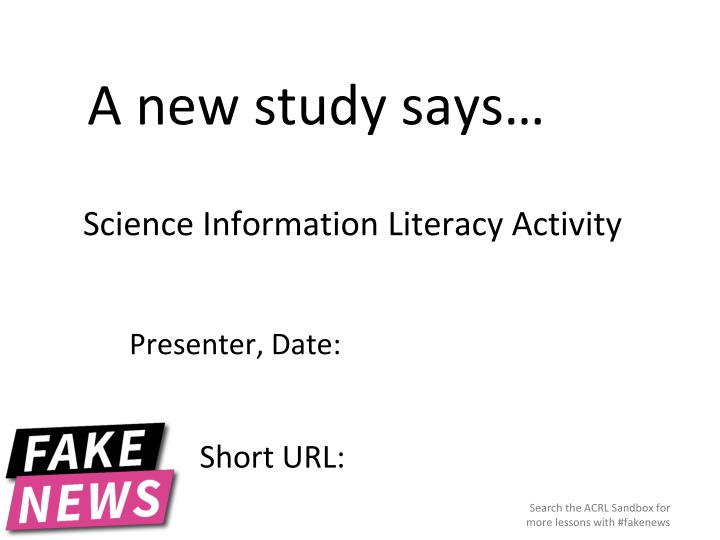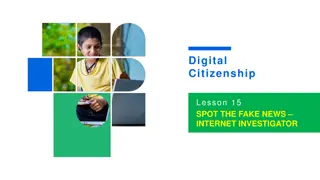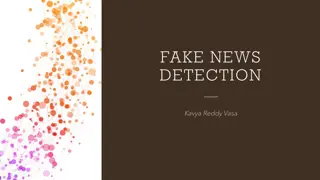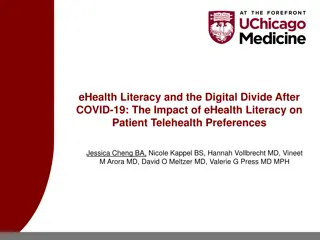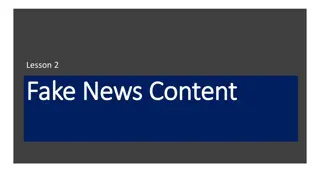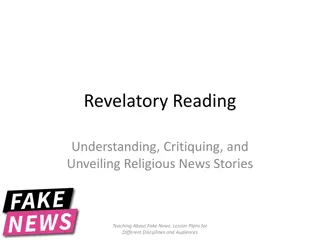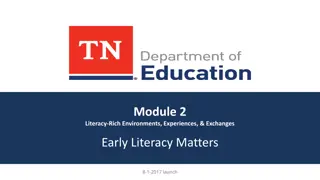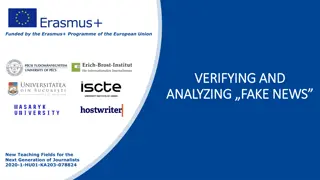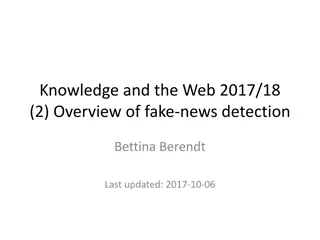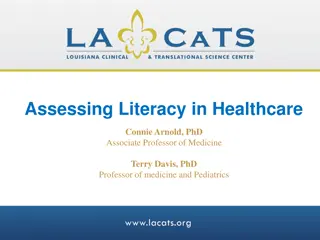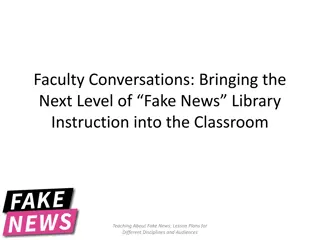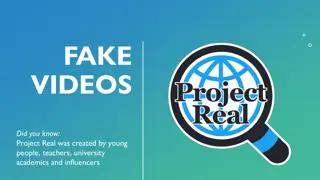Unveiling Fake News Through Science Information Literacy Activities
Discover how to evaluate news reports about scientific studies in this engaging activity. Learn to find and assess original research articles, identify key information in news reports, examine research articles for conflicts of interest, participant characteristics, methodology, and limitations. Improve your science information literacy skills with this comprehensive guide.
Download Presentation

Please find below an Image/Link to download the presentation.
The content on the website is provided AS IS for your information and personal use only. It may not be sold, licensed, or shared on other websites without obtaining consent from the author.If you encounter any issues during the download, it is possible that the publisher has removed the file from their server.
You are allowed to download the files provided on this website for personal or commercial use, subject to the condition that they are used lawfully. All files are the property of their respective owners.
The content on the website is provided AS IS for your information and personal use only. It may not be sold, licensed, or shared on other websites without obtaining consent from the author.
E N D
Presentation Transcript
A new study says Science Information Literacy Activity Presenter, Date: Short URL: Search the ACRL Sandbox for more lessons with #fakenews
A new study says In this activity you will be evaluating a news report about a scientific study. The questions will help guide a discussion about news reporting and research quality.
Find the original research article Does the report have a link (or a citation) to the research article? Yes No Does the link work? Use keywords to find the original research article. Search the ACRL Sandbox for more lessons with #fakenews
Keywords to look for in a news report Where the study took place Who performed the study What journal published it What was the subject When was it published Search the ACRL Sandbox for more lessons with #fakenews
Examine the original research article for: Conflicts of interest Who does the author work for? How did the research get funded? Search the ACRL Sandbox for more lessons with #fakenews
Examine the original research article for: Participants List characteristics of the organism or phenomenon being observed or measured. Search the ACRL Sandbox for more lessons with #fakenews
Examine the original research article for: Methodology Does the paper cite a pre- existing/established protocol or methodology? Do the authors share enough information about their methods so that someone else could perform the same study? Search the ACRL Sandbox for more lessons with #fakenews
Examine the original research article for: Limitations Do the authors report on possible weaknesses of the study? Search the ACRL Sandbox for more lessons with #fakenews
Compare the conclusions from the research study with the news report What does the research article claim? What does the news article claim? Search the ACRL Sandbox for more lessons with #fakenews
Credits Based on A new study says by Megan Carlton & Lea Leininger (2021) Background slide template from: Benjes- Small, C. M., Wittig, C., & Oberlies, M. K. See chapter How the scientific method invalidates fake news. From Teaching About Fake News: Lesson Plans for Different Disciplines and Audiences (2021) Search the ACRL Sandbox for more lessons with #fakenews
